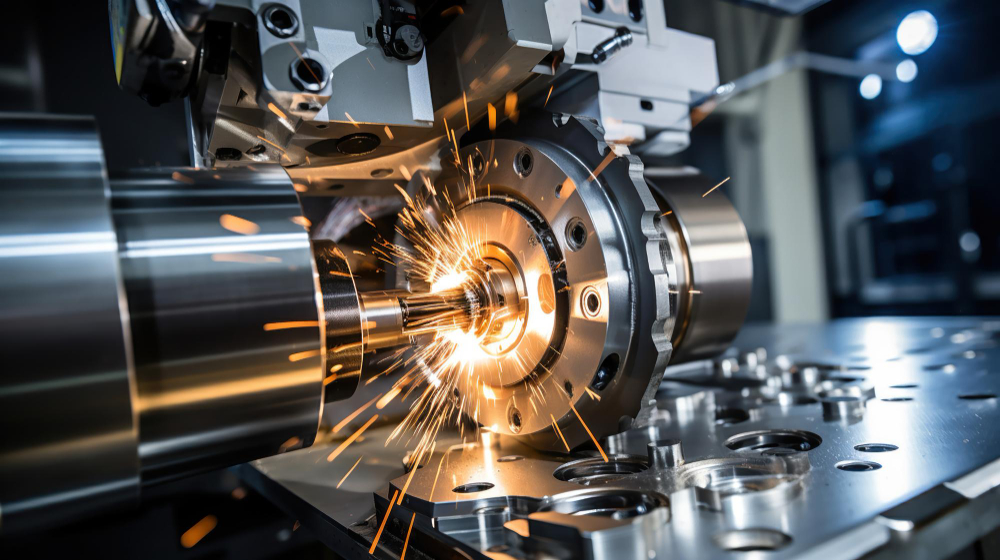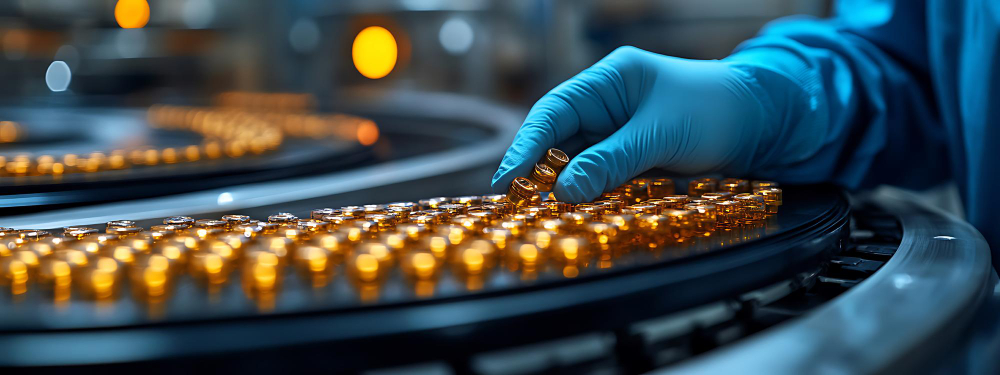What Is Electroplating and Where It Can Be Used?
- 1 How Does Electroplating Work?
- 2 The Electroplating Process Step-by-Step
- 3 Key Factors Affecting Electroplating
- 4 Applications of Electroplating
- 4.1 1. Jewelry and Decorative Items
- 4.2 2. Automotive Industry
- 4.3 3. Electronics
- 4.4 4. Aerospace and Defense
- 4.5 5. Medical Devices
- 4.6 6. Manufacturing and Machinery
- 5 Types of Electroplating
- 5.1 1. Gold Plating
- 5.2 2. Nickel Plating
- 5.3 3. Copper Plating
- 5.4 4. Zinc Plating
- 5.5 5. Chrome Plating
- 6 Conclusion
Electroplating is an essential industrial process widely used for over a century. By applying a thin layer of metal onto the surface of an object through an electrical current, electroplating enhances the surface properties of materials, improving their appearance, durability, and functionality. This versatile process has applications in various industries, from automotive and aerospace to electronics, jewellery, and manufacturing. This comprehensive guide will delve deeper into how electroplating works, where it is used, the materials involved, and the various methods employed to achieve specific outcomes.
How Does Electroplating Work?
At its core, electroplating is a chemical process powered by electricity. It involves the movement of metal ions in a solution, which results in metal deposition onto a conductive surface. The basic principles behind electroplating involve a few key components:
- Anode (Metal Source): The anode is typically made from the metal to be deposited on the substrate. When electricity passes through the system, metal atoms from the anode are oxidized into metal ions, which dissolve into the electrolyte solution.
- Cathode (Object to Be Plated): The cathode is the object that will receive the metallic coating. This object must be conductive to attract the metal ions in the electrolyte solution.
- Electrolyte Solution: This liquid contains metal ions of the coating material. These ions are necessary for transferring metal from the anode to the cathode. The choice of electrolyte depends on the type of metal being deposited.
- Power Source: A direct current (DC) power supply provides electrical energy. This causes the metal ions to migrate toward the cathode, forming a metallic layer on its surface.
The Electroplating Process Step-by-Step

- Preparation: Before the process begins, the object to be electroplated is thoroughly cleaned to remove any dirt, grease, or oxidation. This ensures a smooth and uniform coating. Standard cleaning methods include ultrasonic cleaning, abrasive cleaning, or chemical etching.
- Setting up the Electroplating Cell: The anode and cathode are immersed in the electrolyte solution. The anode is typically the source metal, while the cathode is the object to be plated.
- Electrolysis: When the power supply is turned on, the electric current causes metal atoms from the anode to oxidize, dissolving into the solution as positively charged metal ions. These ions move toward the negatively charged cathode, gaining electrons and reducing back into metal atoms, forming a thin layer on the object’s surface.
- Post-Processing: Once the desired thickness is achieved, the object is removed from the electroplating bath, rinsed, and sometimes polished to enhance its appearance.
Key Factors Affecting Electroplating
The quality of the electroplated layer depends on several factors:
- Current Density: The amount of electric current applied affects the thickness and quality of the coating. Higher current densities typically result in faster plating but can lead to uneven layers or defects if not adequately controlled.
- Time: The longer the object remains in the electrolyte solution, the thicker the metal layer. Precision is necessary to avoid over-plating or under-plating.
- Temperature: The temperature of the electrolyte solution can influence the plating speed and the quality of the finish. Higher temperatures generally increase ion mobility, leading to faster deposition.
- Concentration of Metal Ions: A higher concentration of metal ions in the electrolyte can result in a denser coating.
Applications of Electroplating

Electroplating is used across a vast range of industries, serving both aesthetic and functional purposes. Below are some of the most common applications:
1. Jewelry and Decorative Items
Electroplating is widely used in the jewellery industry to improve the appearance of products. Precious metals like gold, silver, and platinum are electroplated onto cheaper brass or copper to enhance their aesthetic appeal. Gold-plated jewellery, for example, provides the luxurious look of gold at a fraction of the cost. Electroplating also prevents tarnishing, giving items a longer-lasting shine.
2. Automotive Industry
In the automotive industry, electroplating serves both decorative and functional purposes. Chrome plating is a well-known example used to give car parts like bumpers, grills, and wheels a shiny, corrosion-resistant surface. Nickel and zinc electroplating are also used to protect steel parts from rust and environmental damage.
3. Electronics
Electroplating is crucial in the electronics industry to improve electrical conductivity and corrosion resistance. Copper, gold, and silver are commonly electroplated onto circuit boards, connectors, and terminals to enhance conductivity and ensure the efficient transmission of electrical signals. Gold plating is particularly valued for its oxidation resistance, making it ideal for high-reliability connectors in devices like computers and smartphones.
4. Aerospace and Defense
In the aerospace industry, components are exposed to harsh environmental conditions, including extreme temperatures, radiation, and pressure. Electroplating materials like nickel or chromium onto metal components can provide a layer of protection, improving wear resistance and extending the life of parts. In the defence sector, electroplating is often used to provide corrosion protection and enhance the durability of equipment used in challenging environments.
5. Medical Devices
Electroplating is commonly used in the medical industry to coat surgical instruments, implants, and other medical devices. Gold, nickel, and chromium coatings are often applied to improve corrosion resistance, ensure biocompatibility, and provide sterilization. The smooth, polished surface created by electroplating also helps to reduce the risk of bacterial contamination.
6. Manufacturing and Machinery
Electroplating is frequently employed in manufacturing industries to improve machine parts’ wear resistance and longevity. Components that undergo significant friction, such as gears and bearings, are often electroplated with hard metals like nickel or chromium to reduce wear and extend their operational lifespan. Electroplating can also be used to restore worn-out parts, saving costs by eliminating the need for replacements.
Types of Electroplating

There are several types of electroplating processes, each designed for specific applications. Some of the most common methods include:
1. Gold Plating
Gold plating is widely used in both decorative and functional applications. In the electronics industry, gold coats connectors and circuit boards to improve conductivity and prevent corrosion. Gold plating is applied to less expensive metals in jewellery to create a luxurious, gold-like appearance. Due to its oxidation resistance, gold plating is particularly useful in environments with essential corrosion resistance.
2. Nickel Plating
Nickel plating is commonly used as an undercoat before applying other metal coatings, such as gold or chrome. Nickel provides excellent corrosion resistance and is frequently used in the automotive, aerospace, and manufacturing industries. Its hardness makes it a popular choice for protecting machine parts that undergo significant friction and wear.
3. Copper Plating
Copper plating is often used in electronics due to its superior electrical conductivity. It is a common choice for printed circuit boards (PCBs) and electrical connectors. Copper is also an underlayer for other metal coatings like nickel or silver.
4. Zinc Plating
Zinc plating is widely used in the automotive and construction industries to protect steel or iron parts from corrosion. The zinc layer acts as a sacrificial coating, meaning it corrodes instead of the base material, thereby extending the life of the underlying metal.
5. Chrome Plating
Chrome plating is often associated with its shiny, decorative appearance but provides functional benefits like corrosion resistance and hardness. It is commonly used in the automotive industry for plating car parts, as well as in machinery and manufacturing, to reduce friction on moving parts.
Conclusion
Electroplating is a vital process combining science and industry, offering various applications in modern manufacturing, electronics, aerospace, and other fields; by understanding how electroplating works and its different types, industries can enhance their products’ performance, durability, and appearance. As technology advances, electroplating techniques evolve, offering new possibilities for innovation and development across different sectors.

















